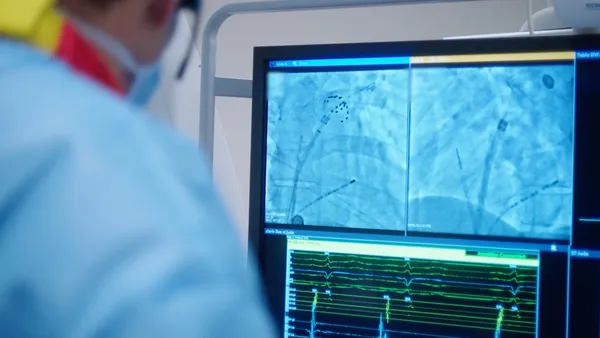Dive Brief:
-
Researchers have published the clinical trial data that persuaded the FDA to make IDx-DR the first autonomous artificial intelligence (AI) diagnostic system cleared for sale in the U.S.
-
The 900-patient trial found IDx-DR beat the pre-specified superiority endpoints for sensitivity and specificity, suggesting it can consistently detect diabetic retinopathy.
-
IDx, the developer of the technology, sees the diagnostic as a useful tool enabling primary care physicians to screen for diabetic retinopathy, resulting in the disease being detected and treated sooner.
Dive Insight:
Proponents of AI-based diagnostics hold up the technology as the solution to mounting healthcare resource challenges. While some patients in cities have access to highly-trained diagnostic specialists and the latest equipment, the availability of these resources is patchier in rural communities. Similarly, the number of people needing to access the resources in cities means demand can exceed supply, leading to long wait times for diagnostic tests. Cities also suffer from patchy availability, with resources concentrated in specialized centers, not the primary care sites that people routinely visit.
One answer to the challenges may be to train, hire and pay more specialists, but this may not be a scalable, sustainable fix given the aging populations and constrained healthcare budgets of many countries.
AI-based diagnostics could solve the resourcing problems in a way that sustainably expands access to specialist testing. Instead of relying on people to perform all analyses, healthcare systems could use AI tech trained to detect patterns indicative of disease to diagnose or triage patients. That would allow healthcare systems to process more patients with fewer staff.
The concept took a step forward in April when the FDA approved IDx-DR, cloud-based software that detects mild or more severe cases of diabetic retinopathy in pictures taken by retinal cameras. When the software makes a diagnosis, the patient is sent to an eye specialist for evaluation and treatment.
The CDC estimates 12,000 to 24,000 people go blind as a result of diabetic retinopathy each year. Yet, only around half of diabetics visit an eye specialist annually.
IDx has now published the data that won it approval. Writing in Nature Digital Medicine, researchers explain how the trial compared IDx-DR analyses performed at primary care clinics to the findings of photographers certified by the Wisconsin Fundus Photograph Reading Center. The trial linked IDx-DR to a specificity of 87.2% and a sensitivity of 90.7%, suggesting the false positive and negative rates may be low enough for the test to be of value to healthcare systems.
The researchers also reported that images of a high enough quality to be analyzed by the AI were obtained in 96.1% of cases. However, multiple imaging attempts and dilation drops were required to capture quality images in some people. The researchers acknowledge "selective dilation may be a challenge to scalable clinical implementation in some cases."
IDx needs to persuade primary care sites that the benefits of its system outweigh the costs, while alleviating concerns about the use of a novel, automated technology. The success (or otherwise) of those efforts will provide an early indication of receptiveness of physicians and patients to AI testing.











